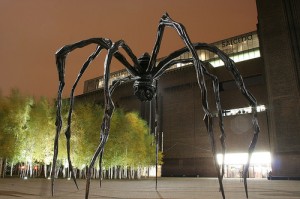
I thought I’d said everything I was going to say about last week’s White Bird performance of Alonzo King’s LINES Ballet and the Shaolin Monks in this preview piece that ran in The Oregonian. But one friend who was impatient with the show asked me via email what I’d thought. And another friend said she couldn’t take time to post her own response, but if I posted something she’d respond in the comments.
So forgive the lateness of it all, but here we go:
“What did you think of the show?” my friend Sharon wrote. “I thought it could have benefited from some major editing. King does some really creative collaborations, but I found that the monks were much more interesting than the dancers (and he’s got a company of truly beautiful dancers … they just weren’t given a lot to work with). I was hoping for more integration, more story — rather than the flat cultural juxtoposition we saw. Which isn’t to say that I didn’t like what I saw, I just wanted more and I wanted it more tightly woven.”
Another friend quoted her friend on the show, succinctly: “The trouble was, you couldn’t take your eyes off the monks.”
My own view is that something pretty interesting was going on here, and as much as I enjoyed it, I would have enjoyed it more if it had been a half-hour shorter: It was too much of a good thing. Every time I’ve seen LINES I’ve liked the work but felt it really needed to be cut.
I also agree there was no story in this piece, which is called “Long River, High Sky” — I don’t think King does stories. He sets up communities instead, so you get the possibility of stories coming out of it. But he’s not going to do it himself, the way that Balanchine or Tudor or Robbins or Ailey or Bill T. Jones would. I think of King as an explorer, interested in the borders between cultures. Especially in this sort of piece — like his “Moroccan Project” and his “People of the Forest,” a collaboration with a troupe of pygmy dancers and musicians from central Africa — his two cultures meet, mingle, try to find a way to mesh.
That’s what he’s interested in. How, given this meeting of cultures, will a new culture evolve? It’s dance as anthropology — not in the ordinarily conceived sense of “authentic” ethnic dance, but in that awkward, exciting, exploratory moment when two unknowns cross paths and begin to investigate each other. If, in “Long River, High Sky,” we find the kung-fu monks more compelling (and I also find a couple of King’s dancers magnetic on stage), perhaps it’s because we’re less familiar with what they do. And, yes, the monks’ aesthetic of combat is pretty cool stuff to watch.
Anyone else want to kick in on this discussion?
 As Art Scatter stoops to post, it’s a Monday night and all the major markets were up substantially, around 10 percent during the day, making up a big chunk of the beating they took last week. Actually, I hate to anthropomorphize the “markets” like that. Took a beating? I don’t think so. They are just numbers. We know how illusory they can be, right? Real and illusory at the same time. Neat trick. Do we think that the “fundamentals” have been fixed so everything is all right now? Pour a few hundred million into some banks, take an equity stake in them, and it’s all good? Art Scatter doesn’t know its economics but … all we can do is shrug.
As Art Scatter stoops to post, it’s a Monday night and all the major markets were up substantially, around 10 percent during the day, making up a big chunk of the beating they took last week. Actually, I hate to anthropomorphize the “markets” like that. Took a beating? I don’t think so. They are just numbers. We know how illusory they can be, right? Real and illusory at the same time. Neat trick. Do we think that the “fundamentals” have been fixed so everything is all right now? Pour a few hundred million into some banks, take an equity stake in them, and it’s all good? Art Scatter doesn’t know its economics but … all we can do is shrug.







